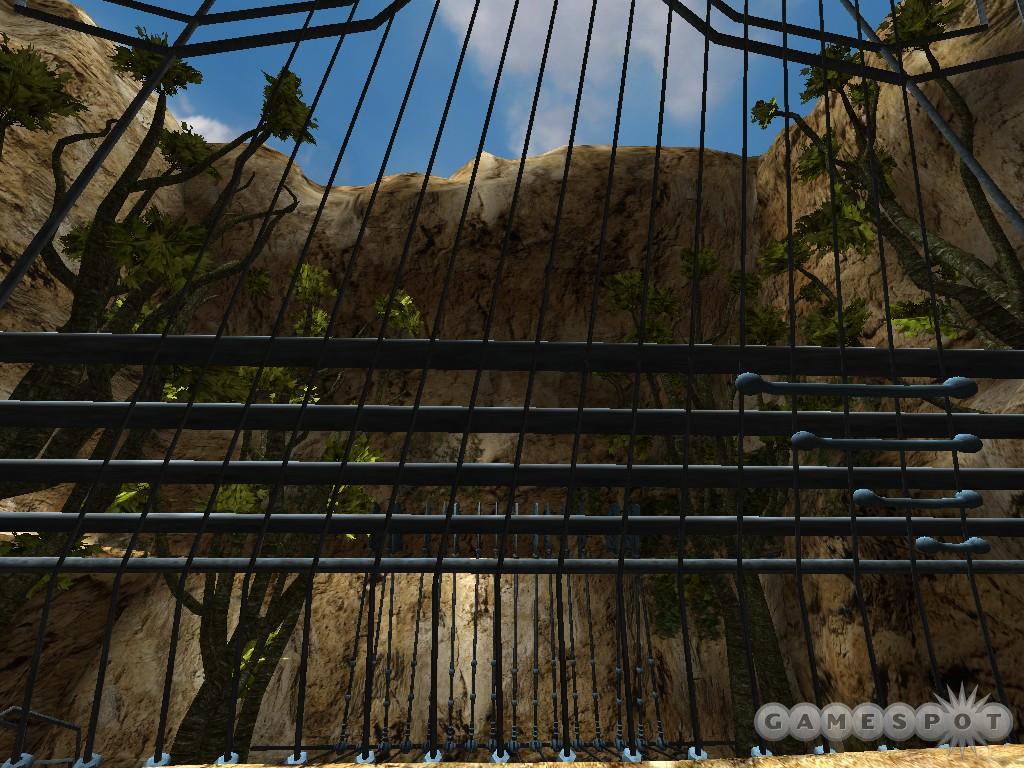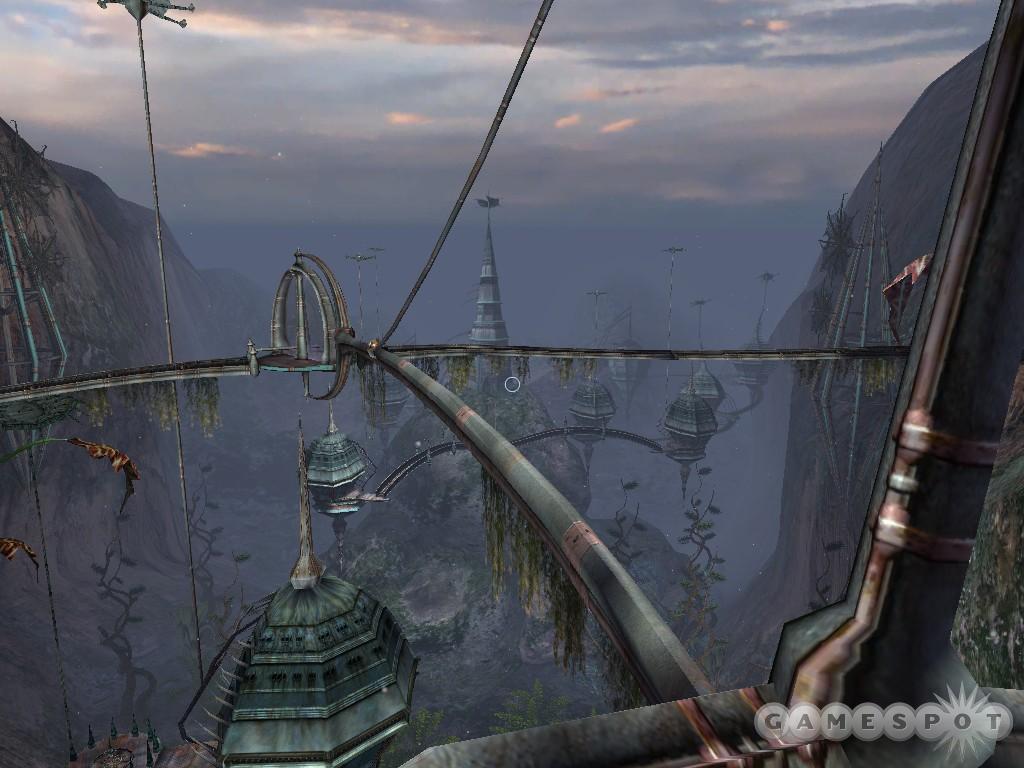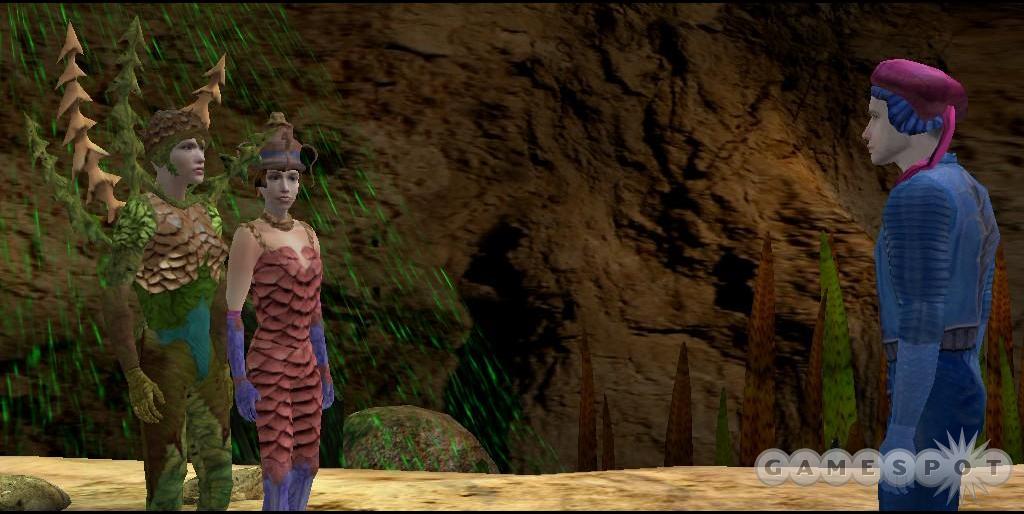The adventure game genre progresses slowly, but recent games like Syberia and Broken Sword: The Sleeping Dragon have been helping it catch up with the times and attract new fans by offering deeper storytelling, richer settings, more logical puzzles, and added immersion. From that perspective, Detalion's latest game, Mysterious Journey II, is a step backward for the genre. This game is just another Myst clone, but without the saving graces of the Myst series. Mysterious Journey II lacks the artistic finesse of the best Myst games and suffers from a weak story and setting. It's filled with lots of arbitrary, convoluted, brutally tough puzzles, though. In fact, you could say this is really a puzzle game masquerading as an adventure game.

In this sequel to 2001's Schizm, your character, Sen, awakens from cryogenic stasis aboard a dilapidated space station. A holographic recording reveals to the amnesiac Sen that he has been in a deep sleep for 214 years as punishment for supposedly betraying his people and destroying most of his world. Sen also learns that it's only a matter of days before the station's orbit decays, sending it crashing to the planet below. With that out of the way, the adventure--using the term loosely--begins. Sen heads down to the planet to find out just what he supposedly did to cause so much trouble.
From the get-go, you know this game is going to be problematic. The improbably bland, generic title says a lot: You'll indeed spend time journeying about the game's 3D world, but why you'd want to do that remains mysterious. Good adventure games immerse you in richly imagined settings and make you feel like you're really getting somewhere as you explore them. They let you unravel intriguing stories and meet memorable characters. Mysterious Journey II offers almost none of that. Using a first-person perspective, you wander through deserted, lonely locales, just like in the Myst games. The story is told only by occasionally switching to clumsy third-person cutscenes. You don't fully take part in the story but merely watch bits of it from time to time.
The story isn't worth your time, anyway. Unlike in so many games, the story here was penned by a professional author, science fiction writer Terry Dowling. Ironically enough, you wouldn't guess that by playing the game. If Mysterious Journey II were a movie, it would be right at home on Mystery Science Theater 3000. The game's story is filled with clichés, clumsy transitions and explanations, and general nonsense--not to mention a laughable, trite ending. For example, the whole game is centered on the idea of two warring factions, one that puts its stock in high technology and futuristic weapons and another that puts its faith in nature and advanced mental powers. Could a science fiction premise be more threadbare? An author could make something of that tired idea, but with such weak, perfunctory stabs at character building and dialogue here, things never gel. In fact, the dialogue can be a hoot, like when a young man named Jimi from the technological faction announces to Sen in a gee-whiz tone that he's been promoted to team leader (whatever that is). It sounds for all the world like your cousin Jimmy announcing he's been promoted to assistant manager at Wal-Mart. Middling to awful voice acting makes it all worse.

Despite fumbled attempts at storytelling during the cutscenes, the real raison d'être of Mysterious Journey II is merely to pit you against a demoralizing string of puzzles. These puzzles reveal a laundry list of game design flaws. They tend to be arbitrary, gratuitous, and overly elaborate. Rube Goldberg would beam with admiration--and then throw himself off a bridge in despair if he actually tried the puzzles himself. Early on, for example, you need to open a door to get to a shuttle. Nearby, you find a huge hall filled with things that look something like giant alien asparagus tips. What on earth are they? Why are they even there? What do you do with them? As you twirl them around to make laser beams reorient themselves (again, you have to ask why), you get no feedback on whether your manipulations are helping or hindering.
On top of that, the puzzles don't help flesh out or reveal the gameworld and characters enough; rather, it feels like the world was built around the puzzles. The puzzles can require you to make tedious treks back and forth to see what effect all your lever-pulling and button-pressing are having. They tend to repeat themselves, too: How many times should anyone have to align bridge segments by pressing a slew of buttons? (Plus, one puzzle, where you move a boat through a water maze using the equivalent of giant fans, is nearly identical to a puzzle in the recent Traitors Gate 2.) The puzzles don't make you feel like you're getting anywhere or accomplishing anything important, but rather they make you feel like you're on some punishing puzzle treadmill lifted from Dante's Inferno.
Worst of all, these challenges can be brutally hard, and they lack any difficulty options or hints. It feels as if this game were designed by some sadistic math professor who's determined to see you fail your final exam. In fact, you'll actually have to do a fair amount of math to complete this game, like converting numbers between base 10 and base 4--using alien numerals. That might be fun if you're a math student, but for most gamers, even hardcore adventure game fans, that's just a ludicrous thing to ask.

On the bright side, the interface is straightforward enough. You simply move about using standard WASD/mouselook shooter-style controls. You can also jump, but only in theory. It literally looks like you're moving only an inch or two off the ground when you press the button, so you can't actually jump over anything. This highlights the silly arbitrariness of the game. In one puzzle, you need to properly align bridge segments vertically before you can cross them. If you align them all with each other, yet they remain a few inches higher than the height required by the "proper" solution, you can't simply jump up a couple of inches to cross them. On top of that, you'll frequently find yourself getting snagged on railings, rock walls, and other objects, which becomes just another thorn in your side as you play the game. On the bright side, manipulating puzzle objects is simple, requiring just one universal button.
Mysterious Journey II is powered by the Jupiter engine used in Monolith's No One Lives Forever 2 and Tron 2.0. This means the graphics rise far above those in many adventure games on a technical level, but where artistry is concerned, things aren't so rosy. The game clearly draws its inspiration from the Myst series, known for its surreal, otherworldly locales. At their best, the Myst games tie the locales and puzzles together thematically, lending them coherence and internal logic and linking them to the series' mythology. Just as importantly, the locales of Myst III, for example, create a strong sense of place--however alien a place--while also boasting a high level of artistry that makes the game fun to simply look at in its own right. Not so in Mysterious Journey II. The game certainly boasts a few pretty scenes and some dramatic vistas, but they feel randomly thrown into the game. The game makes a fetish out of oddity for its own sake. Aboard the space station at the beginning of the game, you abruptly go from what looks like a generic Unreal Tournament level to some kind of cut-rate copy of H.R. Giger's designs for Alien. Walls are now covered in weird secretions, and everything has a vaguely organic look. Why? Who knows. Down on the planet below, you find appropriately alien-looking flora but also bizarre tops spinning around in the sky for no obvious reason.
To some extent, you can live with that sort of artistic arbitrariness by simply ignoring the visuals and concentrating on the puzzles. But then another cutscene comes along to remind you how poor the art direction of the game is. Imagine the silliest, cheapest-looking costumes from the original Star Trek TV series. Then imagine something even sillier and cheaper, and you get the outfits the characters wear in Mysterious Journey II. One character literally looks like she's wearing a piece of pottery on her head, and Sen runs around in a bright blue jumpsuit with a floppy Renaissance-style hat. It's really hard not to laugh. If that weren't bad enough, a graphics glitch pops up from time to time to turn part of the scenery pure gray, and characters briefly pop in and out of existence during the cutscenes.

The game's audio fares no better. Along with the sloppy voice acting, the bland ambient score gives elevator music a good name. It also cuts in and out or skips from time to time. Sound effects are minimal and mostly ineffective. You don't even hear any footsteps as Sen walks.
If you simply want to match wits with a game for the sake of it, you may find some pleasure in the vicious challenges of Mysterious Journey II. And for all the puzzles' frustrations, you have to admit that their complexity at least took some real thought on the part of the designers. If, though, you like your adventure game puzzles to make common sense, offer reasonable challenges, and be cleverly integrated into the story and gameworld, you'll likely hate this game. Either way, there's no actual sense of adventure here, and isn't that what an adventure game is supposed to offer?